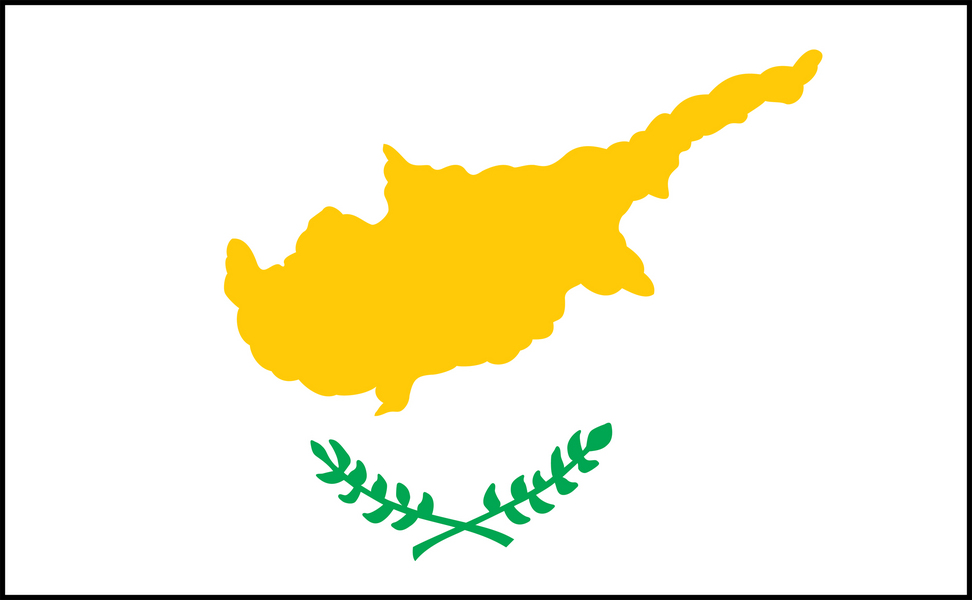Interesting Cyprus Facts
Cyprus is an island country located in South-Eastern Europe where it is bordered by Akrotiri, Dhekelia and the Mediterranean Sea. It stretches over 9,251 km2 of land. The estimated overall population of Cyprus is more than 1,179,551.
Find out interesting Cyprus facts and information about this European country with our fact file for kids. Identify important facts about the size, climate, currency, flag, continent, people, culture, geography, landscape, landmarks, population, location and language of Cyprus.
Learn key information about Europe with our interesting Cyprus facts for kids based on questions such as: What continent is Cyprus in? What is the main language of Cyprus? What is the population of Cyprus? What are the major cities of Cyprus? What is the climate like in Cyprus?
Cyprus Fact File: Continent: Europe * Country Name(s): Cyprus, Republic of Cyprus * Location: South-Eastern Europe * Bordering: Akrotiri, Dhekelia and the Mediterranean Sea * Capital City: Nicosia * Size: 9,251 km2 * Estimated Population: over 1,179,551 * Currency: Euro (EUR) * Language(s): Greek and Turkish * Country Code: +357
Interesting Cyprus Facts for Kids
Interesting Facts for Kids 1: Size & location facts
Cyprus is located on the continent of Europe, it is classed as an island country and is positioned in Akrotiri, Dhekelia and the Mediterranean Sea in South-Eastern Europe. There are seven continents in the world: Asia, Africa, North America, South America, Europe, Antarctica, Australia (Oceania). Europe is the world's second smallest continent, occupying a total area of 10,180,000 km2. Europe has 51 countries, with some countries belonging to both Europe and Asia, and forms 6.8% of the world's landmass. Cyprus is an island country that stretches across a total area of approximately 9,251 km2. It is one of the largest island countries in the Mediterranean.
Interesting Facts for Kids 2: Population facts
The population of this European country is thought to be more than 1,179,551 people. The majority of Cyprus' inhabitants reside in Nicosia which is the country's most populous city. Cyprus has a low to average population when compared to most other countries across the world, its overall population density is approximately 87 people per sq km. The estimated population of Europe is approximately 738,442,000 inhabitants, making it the continent with the second smallest population in the world. The continents in order of population, starting with highest population first, are: Asia, Africa, North America, South America, Europe, Australia (Oceania Region) and Antarctica. The total population of the entire world is in excess of 7.6 billion people.
Interesting Facts for Kids 3: Capital & major cities
The capital city of Cyprus is Nicosia. Other major cities located in this country include Limassol, Larnaca, Famagusta, Paphos and Kyrenia.
Interesting Facts for Kids 4: Country borders
The following details provide a guide to Cyprus' approximate border lengths:
Coastline 648 km.
Interesting Facts for Kids 5: Climate and geography facts
Cyprus receives a Mediterranean climate with mild to cool winters and hot, dry summers. The geography of Cyprus consists of coastal lowlands, central plain and mountainous regions, namely Troodos Mountains, the largest mountain range in Cyprus. The lowest point of Cyprus is the Mediterranean Sea at 0m, and the highest point of elevation is Mount Olympus at 1,951m.
Interesting Facts for Kids 6: Natural Resources of Cyprus
Natural resources can be described as materials and substances found naturally occurring on Earth. Natural resources are very important across the world, and can be exploited for economic gain. The level of natural resources present in an individual country depends on varying factors which are influenced by the geography, climate and location of that country. Some countries, such as Russia, The United States, Saudi Arabia and Canada, have many natural resources, where as some other countries have limited to none. Three of the primary uses of natural resources are food, transport and construction. The following examples provide information on the everyday uses of natural resources: Fish occurs naturally in many bodies of water and can be caught for food consumption. Crude oils can be refined into various fuels in order to power vehicles/cars. Wood/timber can be extracted from forests and used to construct houses and furniture. The natural resources of Cyprus include copper, pyrites, asbestos, gypsum, timber, salt, marble and natural minerals.
Interesting Facts for Kids 7: Language facts
The official languages of Cyprus are Greek and Turkish, with an overwhelming percentage of the population speaking Cypriot Greek. Turkish became the offical language of Northern Cyprus in 1983. A small percentage of the population use other languages as their main form of communication such as
Interesting Facts for Kids 8: Religion facts
The main religion of Cyprus is Orthodox Christian at approximately 89% of the population. Around 2% are Roman Catholic. The remaining population either belongs to other religions or no religion at all.
Interesting Facts for Kids 9: Symbols of Cyprus
Each country across the world has its own unique culture, history and identity. Flags, emblems, symbols, colors, mottos, anthems and songs are used to symbolize the pride and individuality of a nation. These national symbols are forged through a nation's unique history and can represent both hardship and prosperity, embodying freedom, strength and unity. Flags, emblems, colors, songs and mottos reflect the past, present and future aspirations of a country, and create an important image to the rest of the world. National symbols can represent a combination of things that are important to a country such as birds, animals, plants, geographical features, tools of agriculture, crops, and tools of war. The following facts depict some of the national symbols, songs and colors that are important to Cyprus:
National symbol(s): Cypriot mouflon (wild sheep), white dove
National colors: blue and white
National Anthem/Song: Ymnos eis tin Eleftherian (Translation: Hymn to Liberty)
National Holiday(s): Independence Day, 1 October (1960); Republic Day (Turkish Cypriots) 15 November (1983)
